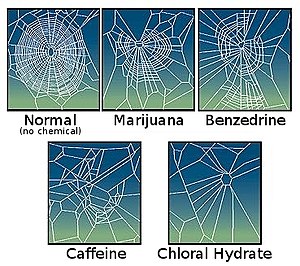TOX3
TOX3| TOX 고이동성 그룹 박스 패밀리멤버 3 | |||||||
|---|---|---|---|---|---|---|---|
| 식별자 | |||||||
| 기호. | TOX3 | ||||||
| Alt. | TNRC9, CAGF9 | ||||||
| NCBI유전자 | 27324 | ||||||
| HGNC | 11972 | ||||||
| 옴 | 611416 | ||||||
| 참조 | XM_049037 | ||||||
| 유니프로트 | O15405 | ||||||
| 기타 데이터 | |||||||
| 궤적 | 제16장 문제 12.1 | ||||||
| |||||||
TOX3라고도 알려진 TOX 고이동성 그룹 박스 패밀리 3은 인간 [1][2]유전자이다.
이 유전자에 의해 암호화된 단백질은 DNA를 [3]풀고 구부림으로써 염색질 구조를 수정하는 기능을 하는 거의 동일한 HMG 상자 DNA 결합 도메인을 공유하는 TOX, TOX2, 그리고 TOX4를 포함하는 전사 인자의 하위 패밀리의 구성원이다.단백질 TOX3는 CAG [4]반복으로 인해 글루타민이 풍부한 C 말단을 가지고 있다.TOX3는 인간 염색체 밴드 16q12.[5]1에 위치한다.이 유전자는 7개의 엑손으로 구성되어 있으며 뇌와 내강 상피 유방 [6]조직 모두에서 매우 잘 발현된다.유전자의 돌연변이는 [2]유방암에 걸리기 쉽다는 것과 관련이 있다.TOX3는 칼슘 의존성 전사를 조절하는 역할을 하며 cAMP 반응 요소 결합 단백질(CREB) 및 CEB 결합 단백질(CBP)[7]과 상호작용합니다.또한 전사인자 [7]활성을 증가시키는 전사조절제인 CITED1과의 상호작용을 통해 전사를 증가시킨다.
질병관련성
TOX3 유전자의 돌연변이는 유방암의 [1][2][8][9]위험 증가와 관련이 있다.
위험 대립 유전자 rs3803662는 TOX3 발현 감소 및 유방암 [7]위험 증가와 관련된 저침입성 SNP(단일 뉴클레오티드 다형증)이다.위험 궤적은 염색질에 대한 FOXA1 결합의 친화력을 조절하는 것으로 보고되었으며, 잠재적으로 TOX3 [6]발현에 영향을 미쳤다.이 궤적은 또한 위험을 [10]증가시키기 위해 고침투성 돌연변이 BRCA1 및 BRCA2와 상호작용한다.rs3803662 변종에는 0.25의 작은 대립 유전자 빈도로 모집단에서 높은 빈도가 있습니다.[11]
TOX3의 전사 메커니즘과 단백질 상호작용에 대해서는 거의 알려져 있지 않다.그러나 2019년 간행물은 TOX3를 투명세포신세포암(ccRCC)의 암 억제 유전자로 식별하고 TOX3의 하향 조절이 SNAI1과 SNAI2의 억제를 감소시켜 상피 간엽 전이를 촉진하여 종양 성장과 [12]전이를 초래한다고 보고했다.유방암과 마찬가지로 TOX3의 하향 조절은 ccRCC [12]환자의 예후 악화와 관련이 있다.
레퍼런스
- ^ a b Smid M, Wang Y, Klijn JG, Sieuwerts AM, Zhang Y, Atkins D, et al. (May 2006). "Genes associated with breast cancer metastatic to bone". Journal of Clinical Oncology. 24 (15): 2261–7. doi:10.1200/JCO.2005.03.8802. PMID 16636340.
- ^ a b c Easton DF, Pooley KA, Dunning AM, Pharoah PD, Thompson D, Ballinger DG, et al. (June 2007). "Genome-wide association study identifies novel breast cancer susceptibility loci". Nature. 447 (7148): 1087–93. Bibcode:2007Natur.447.1087E. doi:10.1038/nature05887. PMC 2714974. PMID 17529967.
- ^ O'Flaherty E, Kaye J (April 2003). "TOX defines a conserved subfamily of HMG-box proteins". BMC Genomics. 4 (1): 13. doi:10.1186/1471-2164-4-13. PMC 155677. PMID 12697058.
- ^ "TOX3 TOX high mobility group box family member 3 [Homo sapiens (human)]". Gene - NCBI. National Center for Biotechnology Information (NCBI), U.S. National Library of Medicine.
- ^ "TOX3 (TOX high mobility group box family member 3)". Atlas of Genetics and Cytogenetics in Oncology and Haematology.
- ^ a b Jones JO, Chin SF, Wong-Taylor LA, Leaford D, Ponder BA, Caldas C, Maia AT (2013). "TOX3 mutations in breast cancer". PLOS ONE. 8 (9): e74102. Bibcode:2013PLoSO...874102J. doi:10.1371/journal.pone.0074102. PMC 3777980. PMID 24069272.
- ^ a b c Gudmundsdottir ET, Barkardottir RB, Arason A, Gunnarsson H, Amundadottir LT, Agnarsson BA, et al. (December 2012). "The risk allele of SNP rs3803662 and the mRNA level of its closest genes TOX3 and LOC643714 predict adverse outcome for breast cancer patients". BMC Cancer. 12: 621. doi:10.1186/1471-2407-12-621. PMC 3553017. PMID 23270421.
- ^ Stacey SN, Manolescu A, Sulem P, Rafnar T, Gudmundsson J, Gudjonsson SA, et al. (July 2007). "Common variants on chromosomes 2q35 and 16q12 confer susceptibility to estrogen receptor-positive breast cancer". Nature Genetics. 39 (7): 865–9. doi:10.1038/ng2064. PMID 17529974. S2CID 7346190.
- ^ Antoniou AC, Spurdle AB, Sinilnikova OM, Healey S, Pooley KA, Schmutzler RK, et al. (April 2008). "Common breast cancer-predisposition alleles are associated with breast cancer risk in BRCA1 and BRCA2 mutation carriers". American Journal of Human Genetics. 82 (4): 937–48. doi:10.1016/j.ajhg.2008.02.008. PMC 2427217. PMID 18355772.
- ^ "OMIM Entry - * 611416 - TOX HIGH MOBILITY GROUP BOX FAMILY MEMBER 3; TOX3". Online Mendelian Inheritance in Man (OMIM).
- ^ Mavaddat N, Antoniou AC, Easton DF, Garcia-Closas M (June 2010). "Genetic susceptibility to breast cancer". Molecular Oncology. 4 (3): 174–91. doi:10.1016/j.molonc.2010.04.011. PMC 5527934. PMID 20542480.
- ^ a b Jiang B, Chen W, Qin H, Diao W, Li B, Cao W, et al. (May 2019). "TOX3 inhibits cancer cell migration and invasion via transcriptional regulation of SNAI1 and SNAI2 in clear cell renal cell carcinoma". Cancer Letters. 449: 76–86. doi:10.1016/j.canlet.2019.02.020. PMID 30772441.


